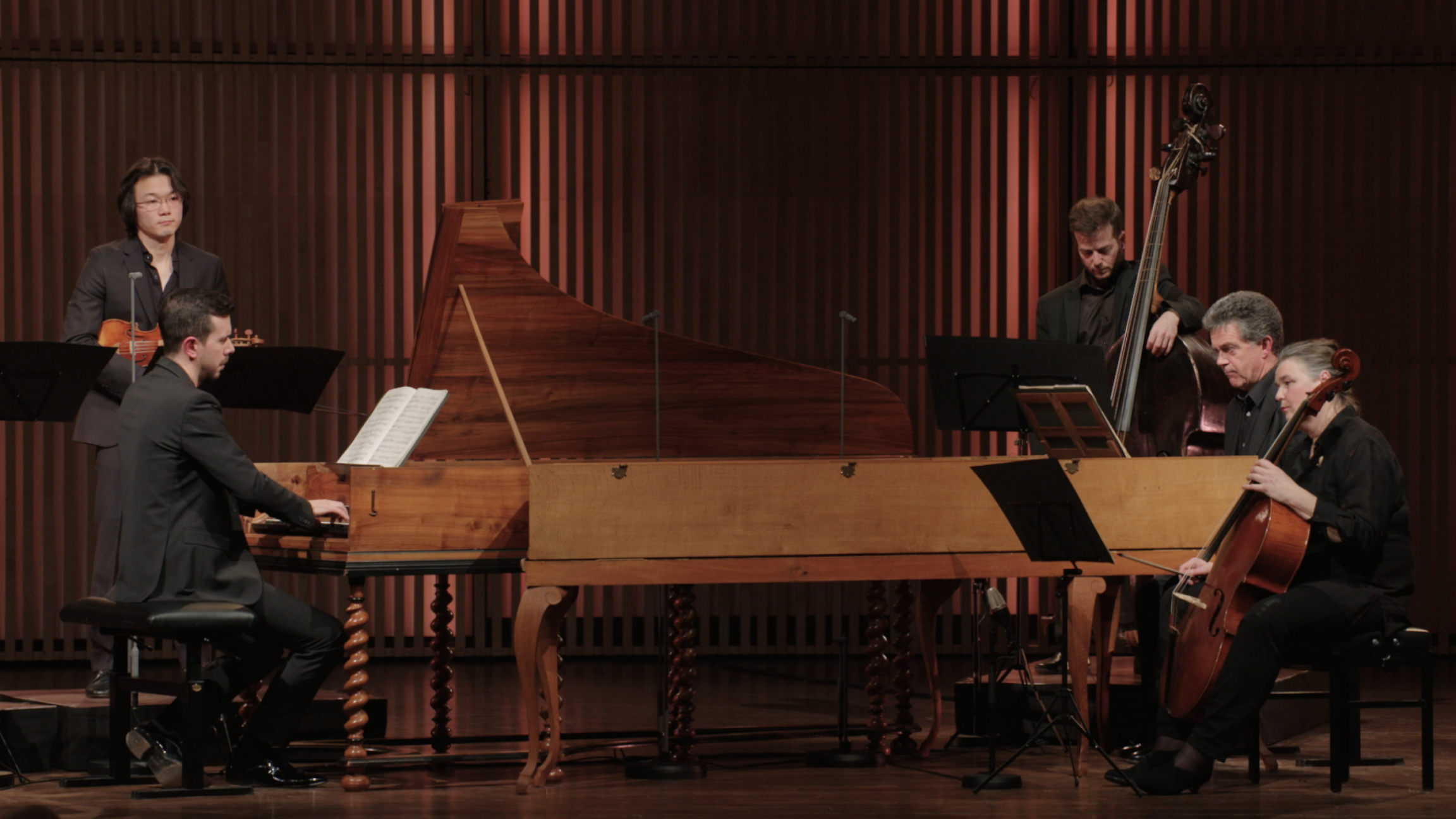

Concerto for two harpsichords in C major
BWV 1061 performed by Francesco Corti, Siebe Henstra
and the Netherlands Bach Society
Muziekgebouw aan 't IJ, Amsterdam
Behind the music
A spectacular tête-à-tête
So much skill in the keyboards means a raw deal for the strings
Just listen to how busy the two harpsichordists are! Classic Italian concertos open with a tutti introduction, followed by virtuoso variations on the theme for the soloist(s), alternating with passages for the whole ensemble. But here the two keyboards actually do everything themselves. In the second movement, they do not even need anyone else, and in the finale the rest do not get a look in for a very long time. The key to this mystery lies in the history of the origins of the piece, which – this is Bach, after all – is filled with speculation.
The only source that can be directly linked to Bach is a manuscript from 1732-33 by Anna Magdalena, with corrections and additions by her husband. What are the instruments? Two harpsichords, of course. And there is such virtuosity in this true masterpiece! Maybe the composer played this piece with his son Wilhelm Friedemann, when he had just arrived in Dresden. Or maybe father and son played it even earlier, in Zimmermann’s coffee house, for example. And might the spartan string parts that were added later have been the work of said son, rather than that of the father? The source that includes the string parts, from the second half of the eighteenth century, provides no clarity. Stylistically speaking, there are indications for both interpretations, as the boundless playfulness of Wilhelm Friedemann and the rhythmic ingenuity of Johann Sebastian are closely related.
But whoever wrote the accompaniment did not exert himself too much. Almost everywhere, the strings double the soloists exactly, apart from the odd independent motif. For example, ‘Bach’ (you can decide which one) lets the quartet break in a couple of times with the opening motif, as well as providing harmonic and rhythmical accents. So the skill lies in the keyboards. Listen, for instance, to how they do not lose the tension for a moment in the many minutes of the second movement, and to the originality of how the closing fugue develops into a five-part explosion.
- BWV
- 1061
- Title
- Concerto for two harpsichords in C major
- Instrument
- harpsichord
- Genre
- harpsichord works, orchestral works
- Year
- 1732-1735?
- City
- Leipzig
- Special notes
- There is an earlier version for two harpsichords with no accompaniment, BWV 1061a.
Extra videos
Vocal texts
Original
Translation
Credits
-
- Release date
- 20 August 2020
-
- Recording date
- 3 February 2017
-
- Location
- Muziekgebouw aan 't IJ, Amsterdam
-
- Harpsichords
- Bruce Kennedy, 1989 after Michael Mietke and Geert Karman after J.H. Gräbner, 1774
-
- Harpsichordists
- Francesco Corti, Siebe Henstra
-
- Violin
- Shunske Sato, Noyuri Hazama
-
- Viola
- Pieter Affourtit
-
- Cello
- Lucia Swarts
-
- Double bass
- Hen Goldsobel
-
- Director and editor
- Lucas van Woerkum
-
- Music recording
- Guido Tichelman, Bastiaan Kuijt, Pim van der Lee
-
- Music edit and mix
- Guido Tichelman
-
- Camera
- Jochem Timmerman, Rene Holbrugge, Kenneth Dirkzwager
-
- Camera assistant
- Klazina Westra
-
- Lights
- Zen Bloot
-
- Assistant director
- Stijn Berkhouwer
-
- Set technique
- Justin Mutsaers
-
- Data handling
- Jesper Blok
-
- Project manager nep
- Peter Ribbens
-
- Interview
- Onno van Ameijde, Marloes Biermans
-
- Producer concert
- Marco Meijdam
-
- Producer film
- Jessie Verbrugh
Discover
Help us to complete All of Bach
There are still many recordings to be made before the whole of Bach’s oeuvre is online. And we can’t complete the task without the financial support of our patrons. Please help us to complete the musical heritage of Bach, by supporting us with a donation!

